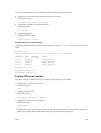
Figure 66. Configuring Redundant Layer 2 Pairs without Spanning Tree
You configure a redundant pair by assigning a backup interface to a primary interface with the
switchport backup interface command. Initially, the primary interface is active and transmits traffic
and the backup interface remains down. If the primary fails for any reason, the backup transitions to an
active Up state. If the primary interface fails and later comes back up, it remains as the backup interface
for the redundant pair.
The system supports only 10 Gigabit and 40-Gigabit ports and port channels as primary/backup
interfaces in redundant pairs. (A port channel is also referred to as a link aggregation group (LAG). For
more information, refer to Interfaces) If the interface is a member link of a LAG, the following primary/
backup interfaces are also supported:
• primary interface is a physical interface, the backup interface can be a physical interface
• primary interface is a physical interface, the backup interface can be a static or dynamic LAG
• primary interface is a static or dynamic LAG, the backup interface can be a physical interface
• primary interface is a static or dynamic LAG, the backup interface can be a static or dynamic LAG
In a redundant pair, any combination of physical and port-channel interfaces is supported as the two
interfaces in a redundant pair. For example, you can configure a static (without LACP) or dynamic (with
LACP) port-channel interface as either the primary or backup link in a redundant pair with a physical
interface.
536
Layer 2


















